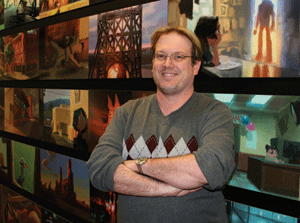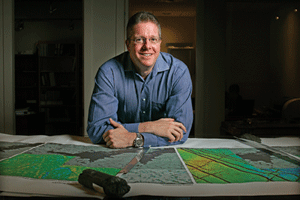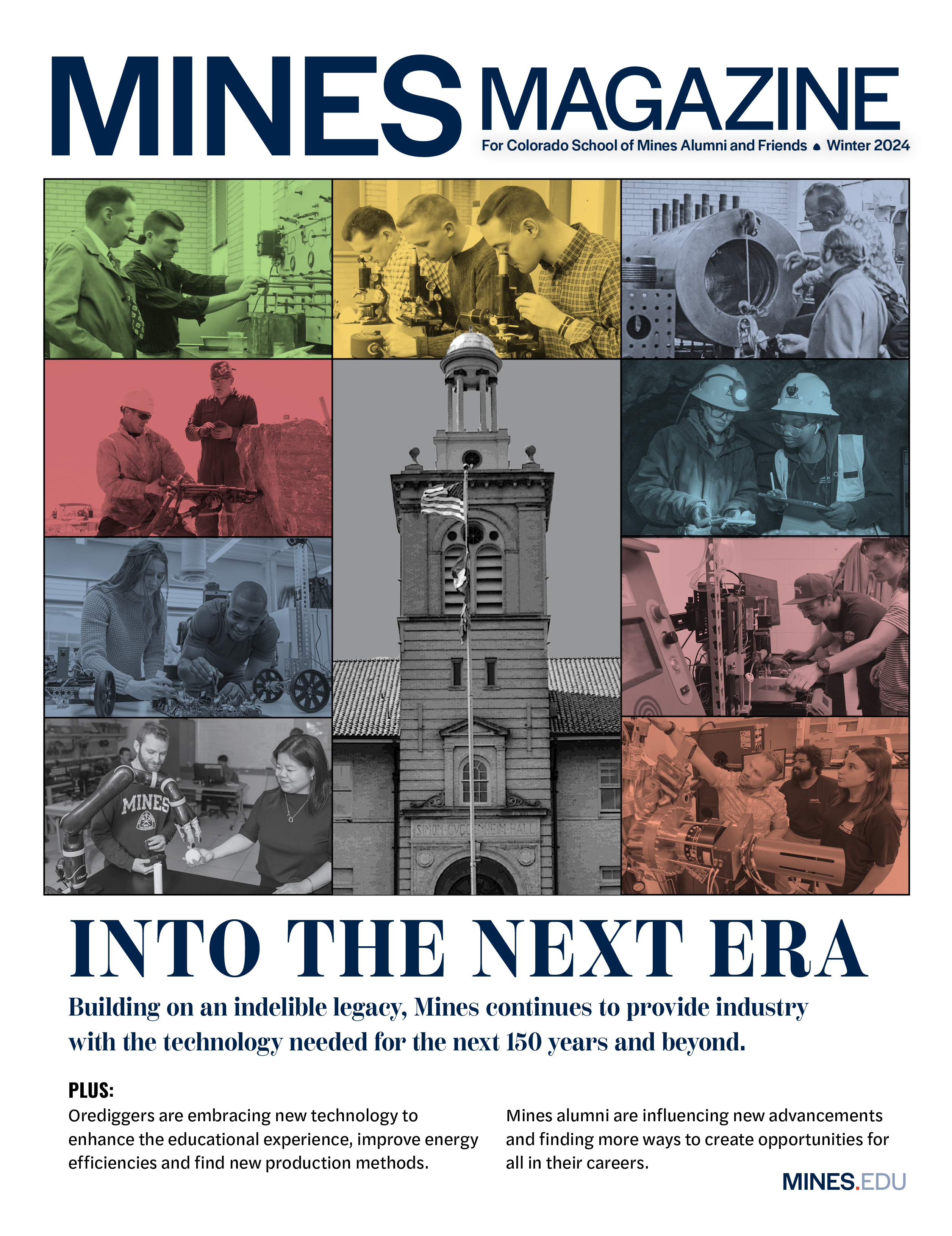 At the intersection of art and technology, where mathematical computer modeling meets lighting design in the animated movie industry, you’ll find Chris Springfield ’91. The artist/engineer just wrapped up three and a half years of work on the recently released computer-animated Disney movie, Bolt. Springfield supervised the lighting on a number of scenes, overseeing, as he describes it, the mathematical modeling that set up the computer-generated lighting, enabling artists to manipulate which objects get lighted and how.
At the intersection of art and technology, where mathematical computer modeling meets lighting design in the animated movie industry, you’ll find Chris Springfield ’91. The artist/engineer just wrapped up three and a half years of work on the recently released computer-animated Disney movie, Bolt. Springfield supervised the lighting on a number of scenes, overseeing, as he describes it, the mathematical modeling that set up the computer-generated lighting, enabling artists to manipulate which objects get lighted and how.
“It fits in with the animation heritage of Disney,” he says, when artists painted backgrounds with painstaking detail. “We’re the next generation of background design,” in which lighting is adjusted, virtually, to achieve the desired artistic look.
Much has been made in the press of Bolt’s “painterly sensibility.” The set design intentionally evokes the paintings of Edward Hopper and the lighting of famed cinematographer Vilmos Zsigmond; Springfield, as “sequence lead,” was part of a team of more than 300 artists and software engineers who made the aesthetic possible.
Bolt is the latest in a string of films on which Springfield has worked in an 11-year career with Walt Disney Animated Features, starting as a software engineer and increasingly specializing in the lighting aspect of virtual set design. His movie credits include Chicken Little, Home on the Range, Treasure Planet and Tarzan. Along the way, he picked up a 2003 Academy Award for technical achievement in virtual illumination.
What seems an unlikely marriage of disparate fields comes naturally to Springfield, the son of an artist and a geologist who together formed a successful map-making business. He loved acting in grade-school plays; by high school he was making short films. At Mines and while pursuing his doctorate in applied physics at the California Institute of Technology, he was involved in all aspects of student theater. “It’s funny telling people I was involved in theater at two different engineering schools,” he says.
With a friend at Cal Tech, Springfield co-wrote, directed and produced the feature-length film Green Eggs and Hamlet, a Shakespeare-cum-Dr. Seuss production. “We shot the whole movie with a digital camera,” he says, “which was kind of cutting edge at the time.”
The movie, and his connections in both the physics and theater departments, led him to put his PhD on hold so he could work on computer graphics in the movie Dante’s Peak.
Completing his degree at Cal Tech gave Springfield a renewed appreciation of his experience at Mines. “A lot of the (Mines) team-building curriculum has translated directly into my work, both in graduate school and in my profession.”
In the world of computer-generated virtual lighting, look for the spotlight to continue to shine on Chris Springfield.



